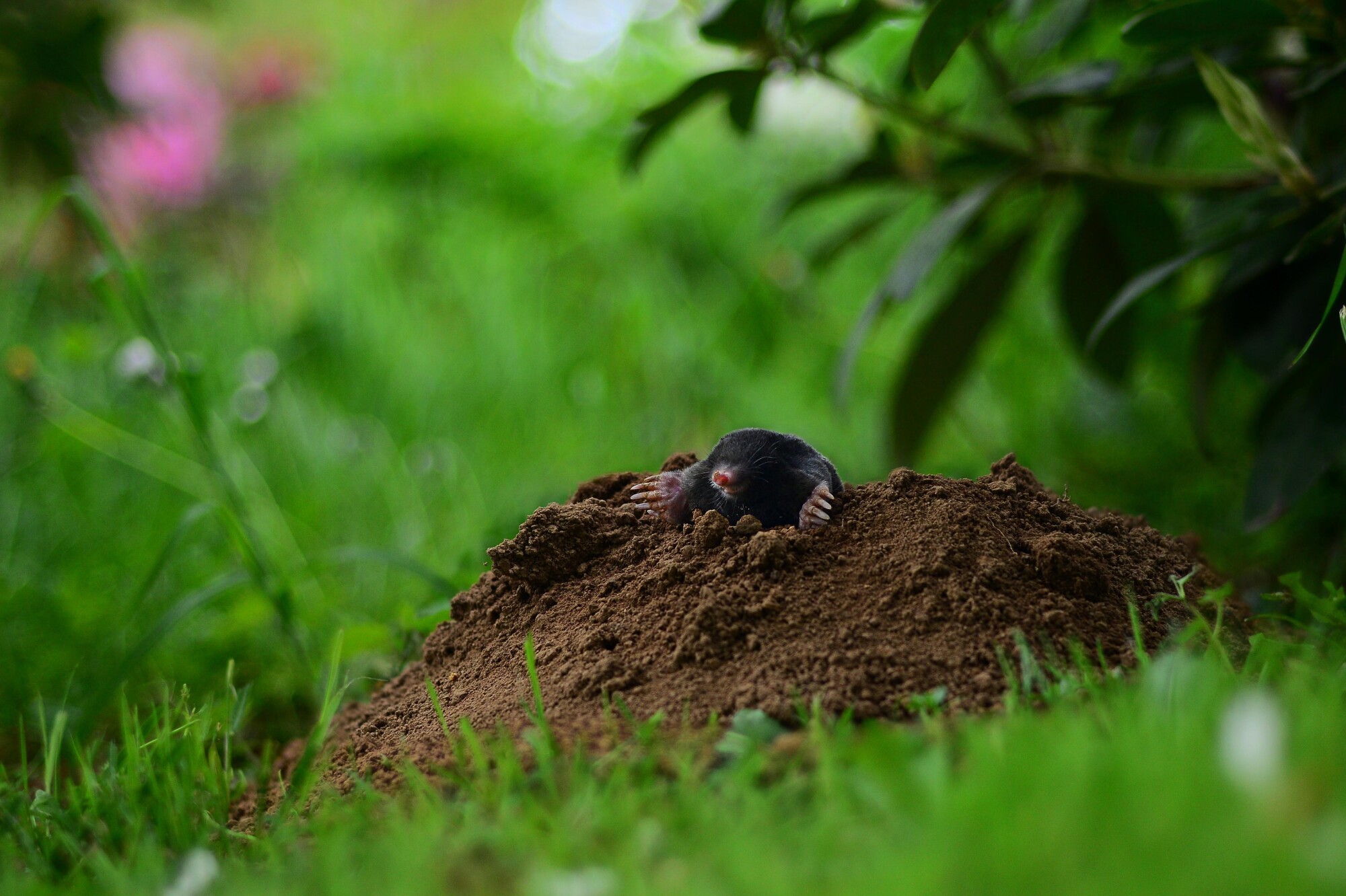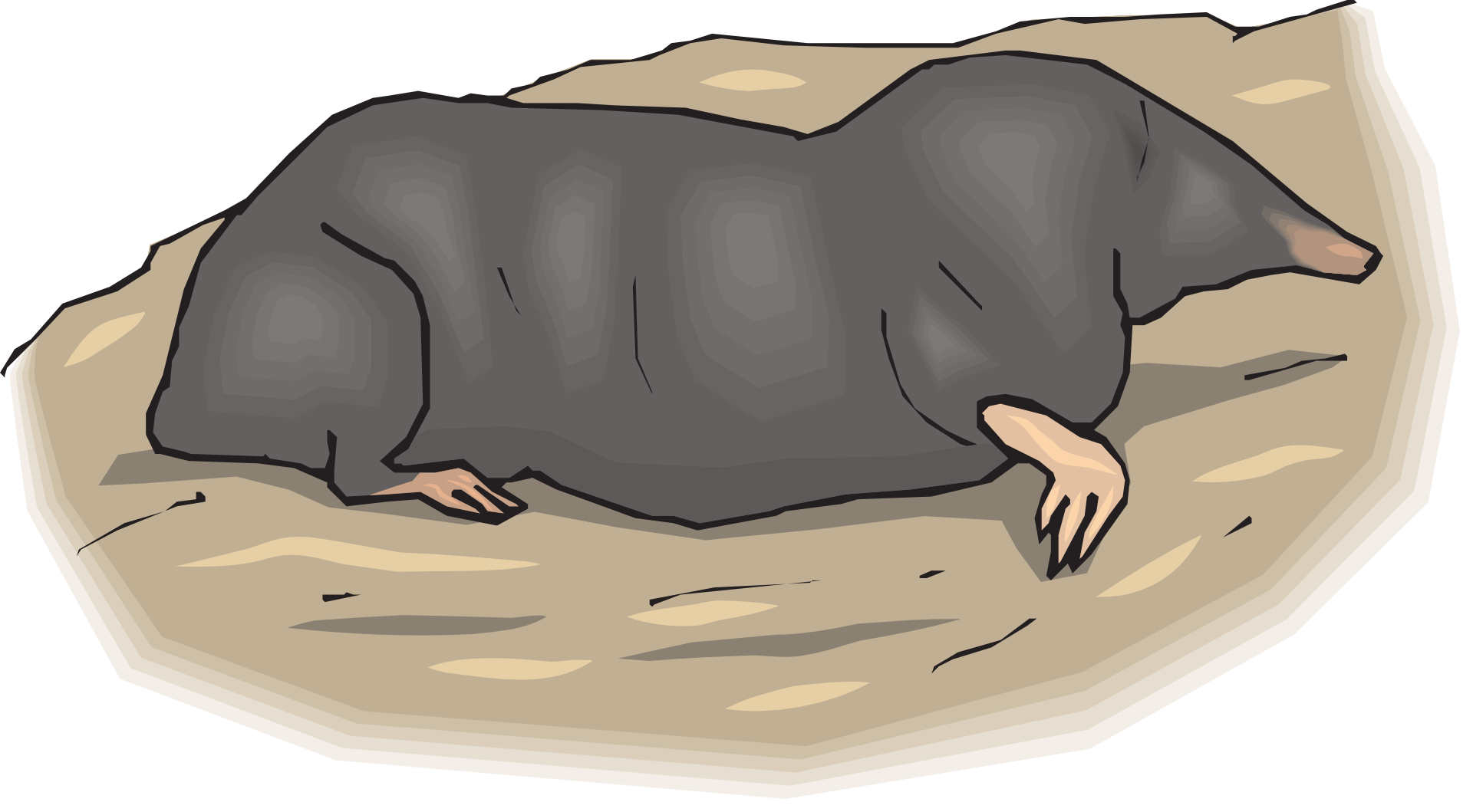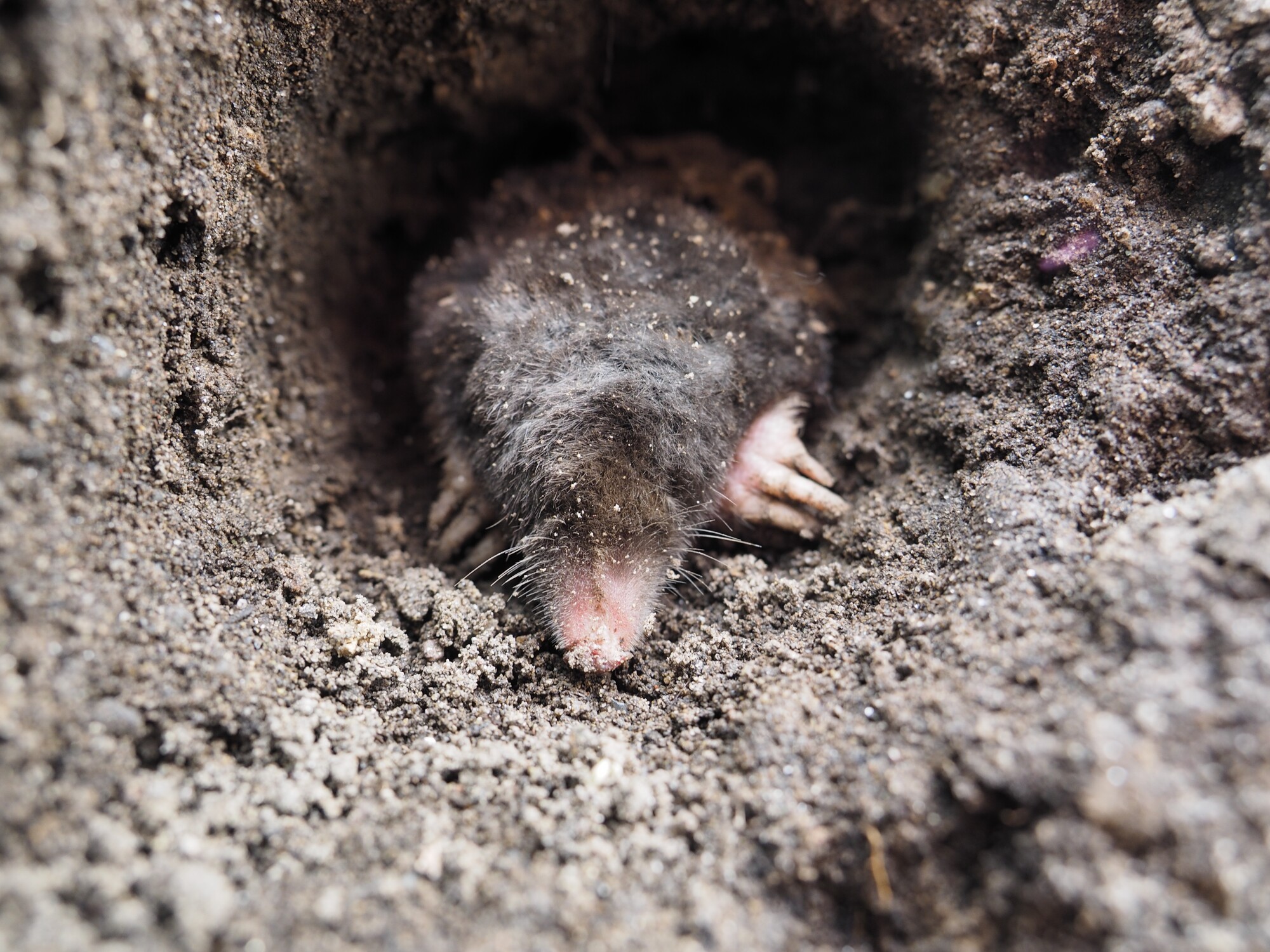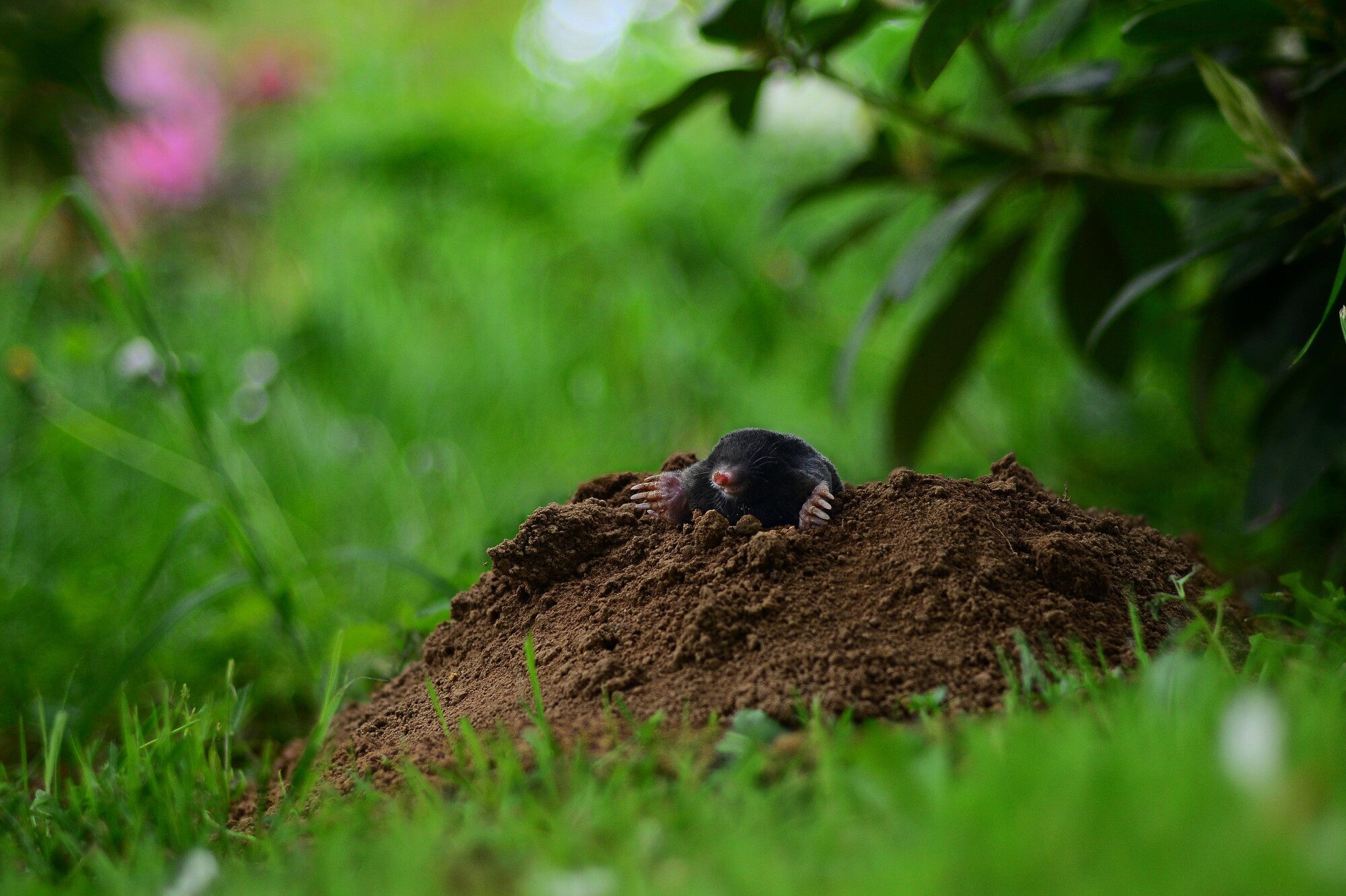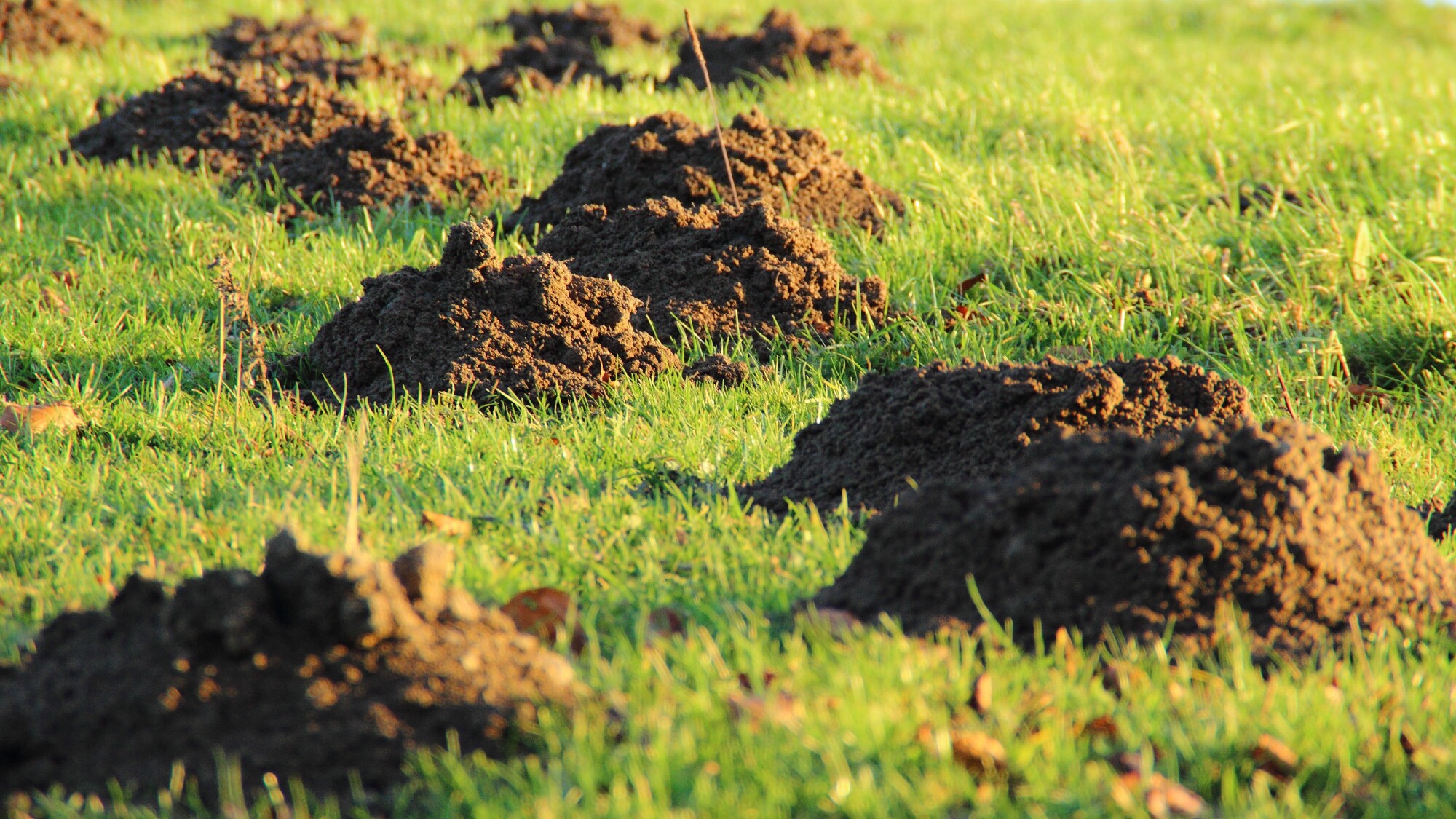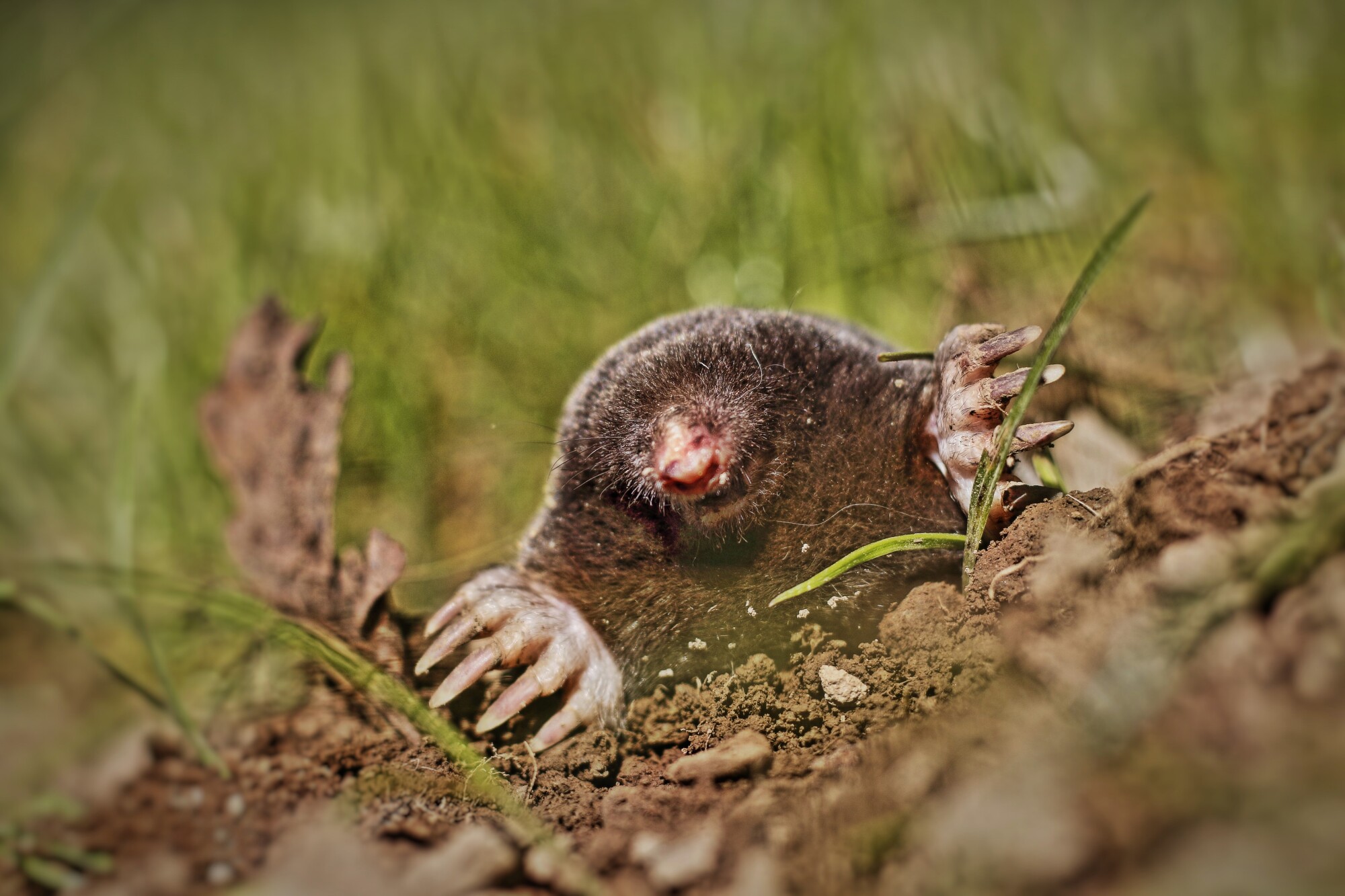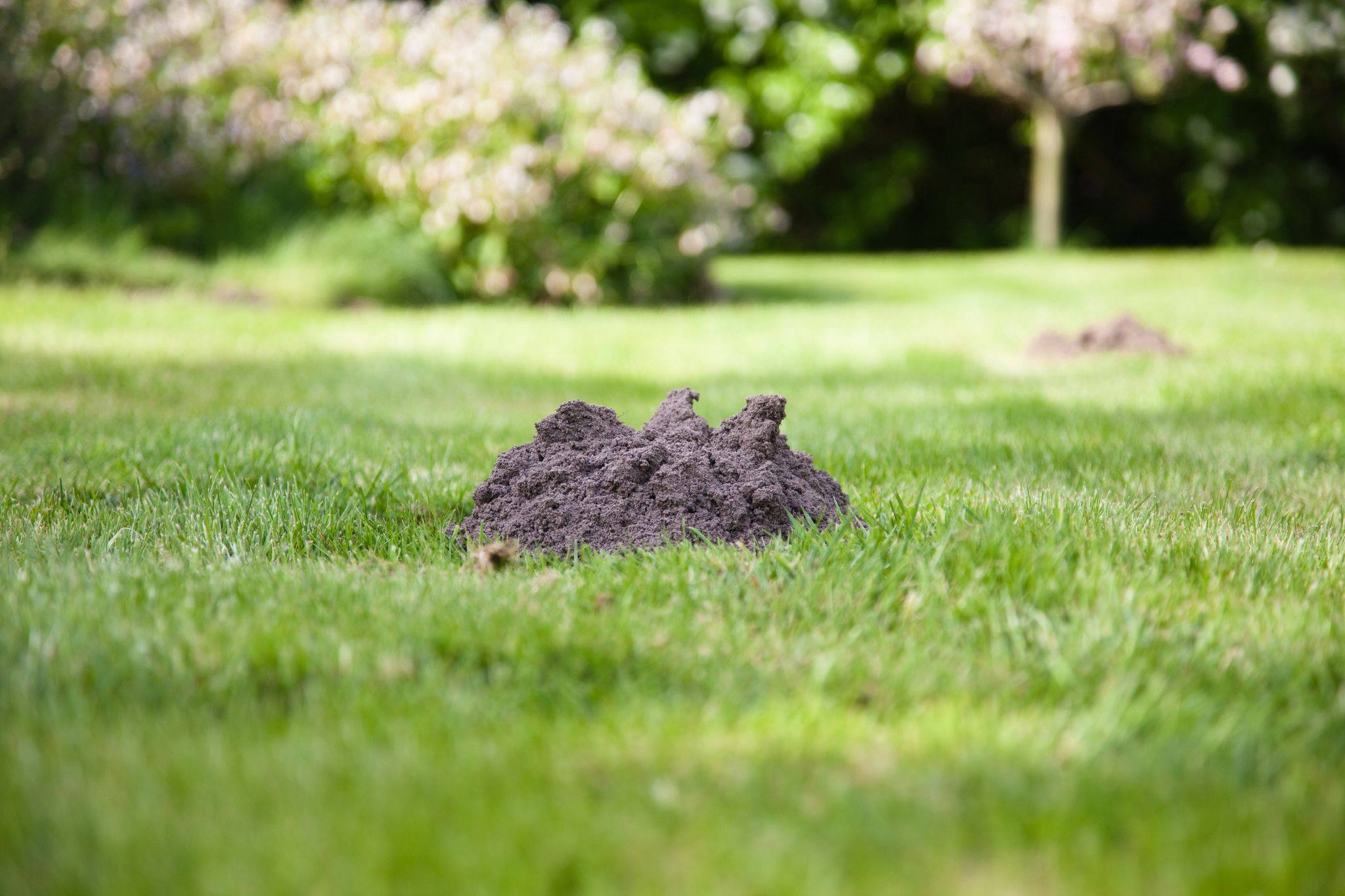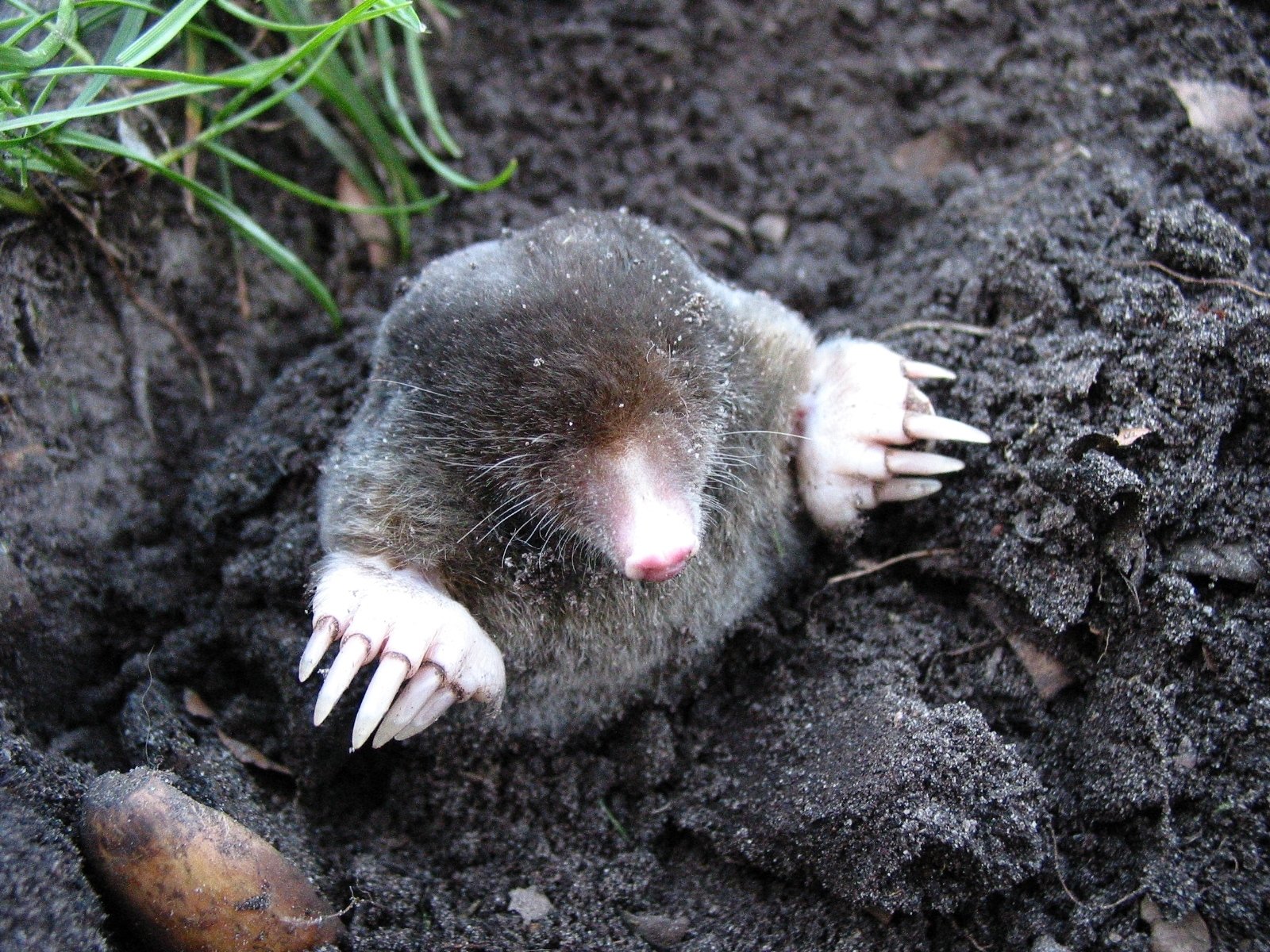Moles can dig up to 160 feet of ground in a single night.
If you see raised dirt or piles of dirt near holes in the ground, you may have a mole. Mole extermination is important if you want to protect your lawn and garden, and prevent further damage.
When it comes to how to get rid of moles, there are several tactics and methods of mole extermination that you can try. When you see the signs of a mole problem, you need to act fast. They will continue to cause damage as long as they are active in your yard.
They do this by disturbing the ground, which can cause damage to the roots of plants and grass. The tunnels they leave behind can also allow too much air in, drying out your plants from the bottom up.
Once you’ve discovered you have a mole, the next logical step is to consider how to get rid of ground moles. As you might imagine, with any solution there are possible drawbacks as well. Let’s take a look at some of the most common methods available.
1. Dig a Trench
One way to keep the mole from returning is to dig a trench around your yard. This may seem extreme, but it will keep moles from being a problem forevermore. However, it is a lot of work as the trench needs to be around 3 feet deep and filled with impassable materials like rocks.
Some people also use metal wire or mesh as well. This can help by preventing a mole from being able to move through the area. Of course, if the mole has moved into the yard then this method is ineffective as the mole will be trapped inside your yard.
This barrier will also need to extend above ground around a foot. You can see the problem with this method, as it will forever change the way your yard works, and might not even be possible in all areas. If this isn’t a solution for you, don’t worry, there’s other methods you can try.
2. Use Repellant
When it comes to what keeps moles away, there are tons of options. From professional-based repellents that use castor oil to home remedies with red pepper flakes, you can find a ton of different ideas out there. The problem is, not all of these methods work, and even the ones that don’t work forever.
As with any repellent, you should also consider environmental factors. You could chase off wildlife that you want to keep, or rain and other events might make your repellent ineffective. This means that you could simply be wasting your time.
Before you try to use a substance as a mole repellent, it is a good idea to ask a professional. Sometimes old remedies for problems like moles are found to not work. You don’t want to waste time, you need to get rid of the moles right away.
3. Poison
One method that you can try is putting out bait with poison. This can be effective as if the mole comes into contact with even a small amount it will be fatal. Unfortunately, poison that works on moles also works on cats and dogs.
If you are going to use poison, be very careful that no pets get close to the treated area. This can be very difficult depending on your situation and your pets. Moles are resilient and tough, so even a small amount of poison made for them can kill even large pets.
Another problem is that the poison could kill other animals in your yard. Even children can be at risk when poison is applied all over the place. Be very careful if you do attempt to poison moles in your yard.
4. Eliminate Their Food
Moles love to eat insects, particularly those that are found in gardens. Grubs are often a favorite of moles, and having a lot of grubs will certainly attract them. The problem with this method is that it can be very difficult to remove all insects from your yard.
Insects exist as part of any healthy ecosystem. This means that you can expect that there are tons of insects in your yard. This makes removal of all the insects a mole might be interesting problematic, as it can also unbalance the ecosystem of your yard.
Another related problem with removing insects is that many insects help keep lawns and gardens healthy. If you remove them, you may find your lawn and garden suffering and dying, which was what you were trying to prevent in the first place.
5. Mole Traps
When it comes to mole control one of the oldest and most effective methods involves trapping. Trapping is when special traps designed to catch moles are placed around the yard where the mole is suspected of being and baited. This draws the moles into the trap.
Mole traps are a humane way to get rid of moles, they don’t pose a serious risk to pets or children, unlike poison and other methods. You also get the added benefit of not having to dig a deep trench all the way around your property. This makes mole traps one of the most attractive options.
Mole traps are also very cost-effective as they can be used again and again. However, if the traps aren’t placed correctly they won’t be very effective. This is why it can often save time and hassle by having a professional who understands mole behavior do the job for you.
Mole Extermination Made Quick and Easy
A professional mole removal service isn’t as hard to find as you might think. Spare yourself the hassle of having a torn-up yard. Don’t risk the use of harmful toxins and poisons either, it’s unnecessary for mole extermination.
If you have any questions or want to schedule an appointment simply contact us. We are ready to get started and get your yard mole free. Then you can stop worrying about mole extermination and get back to enjoying your yard.



